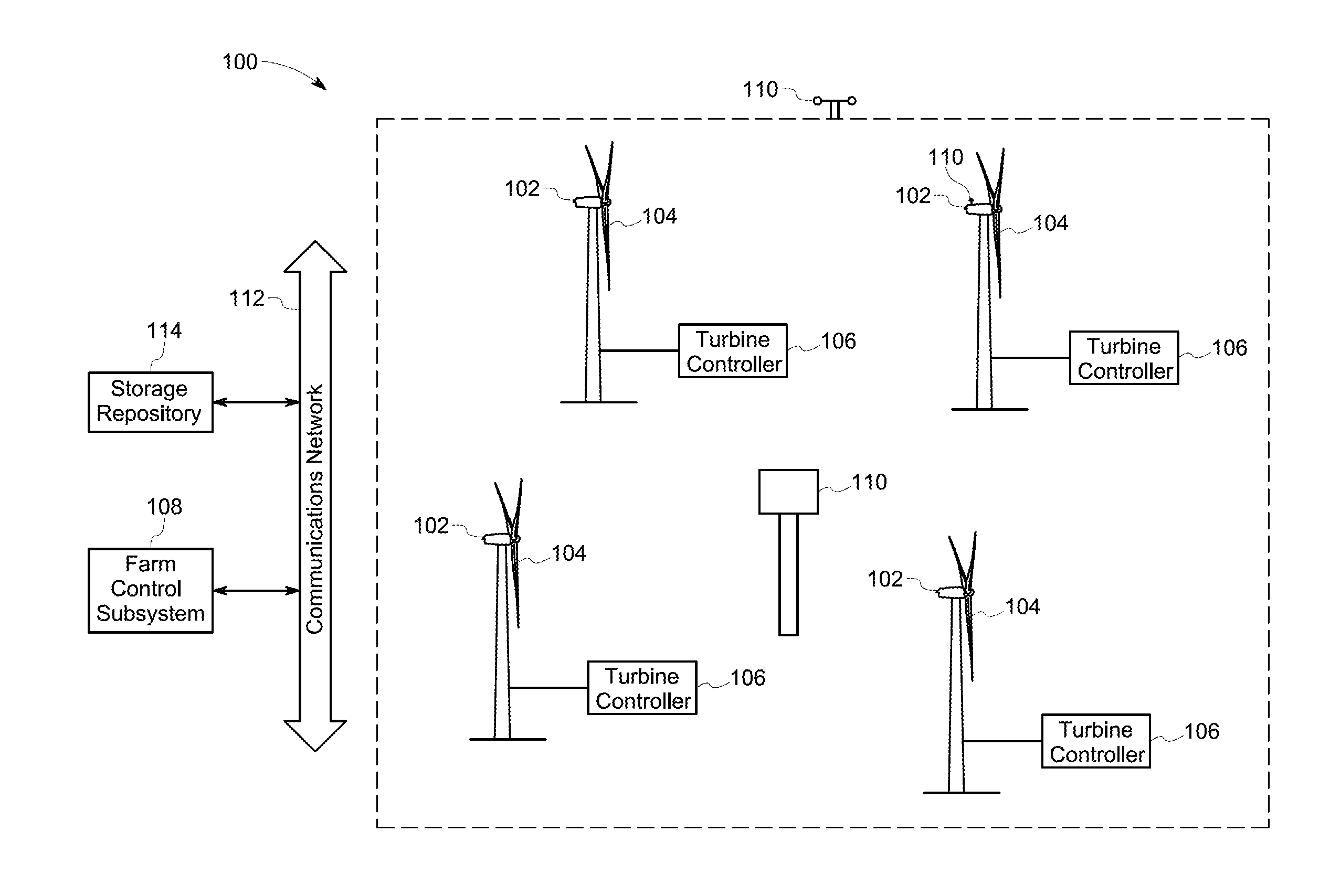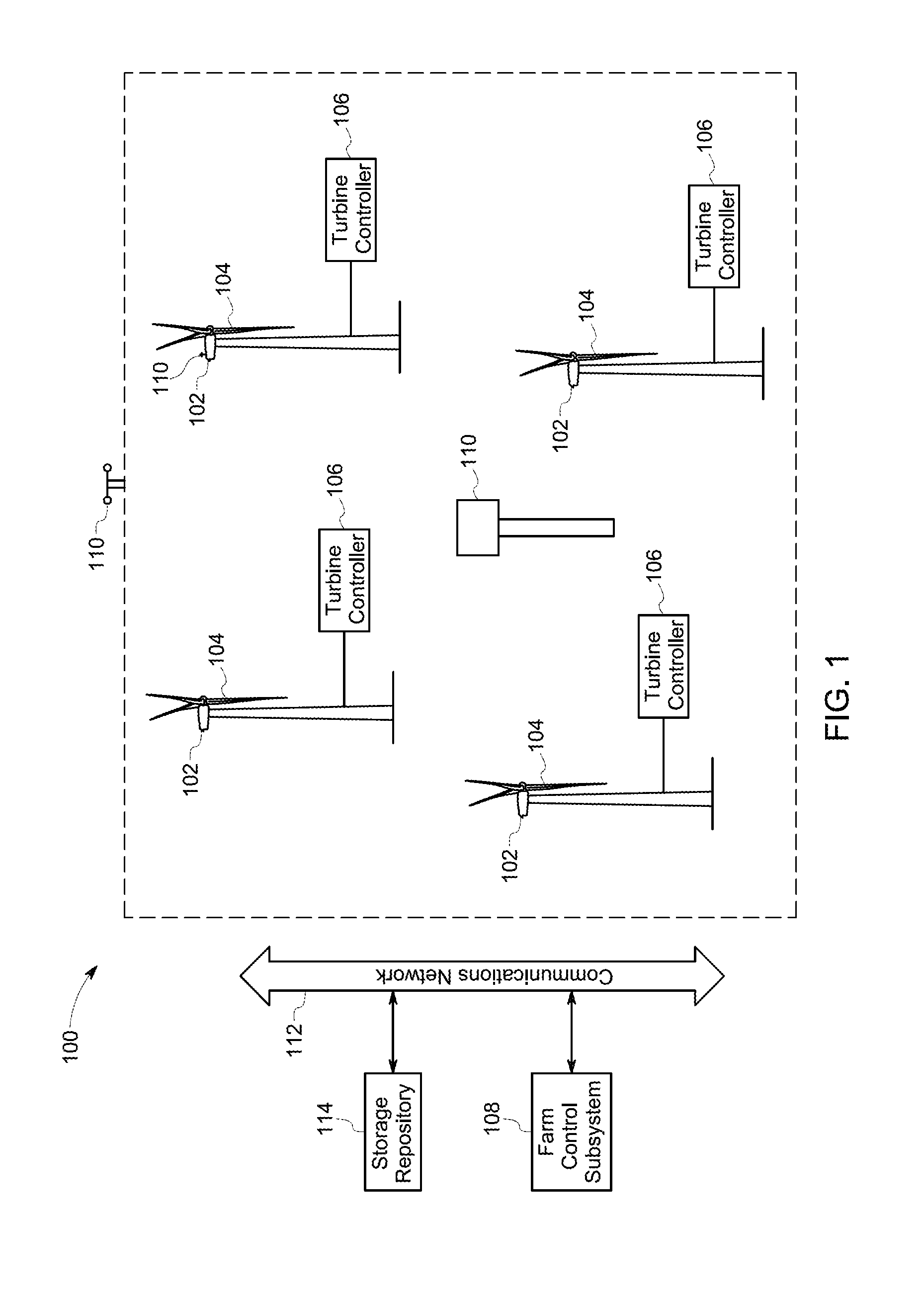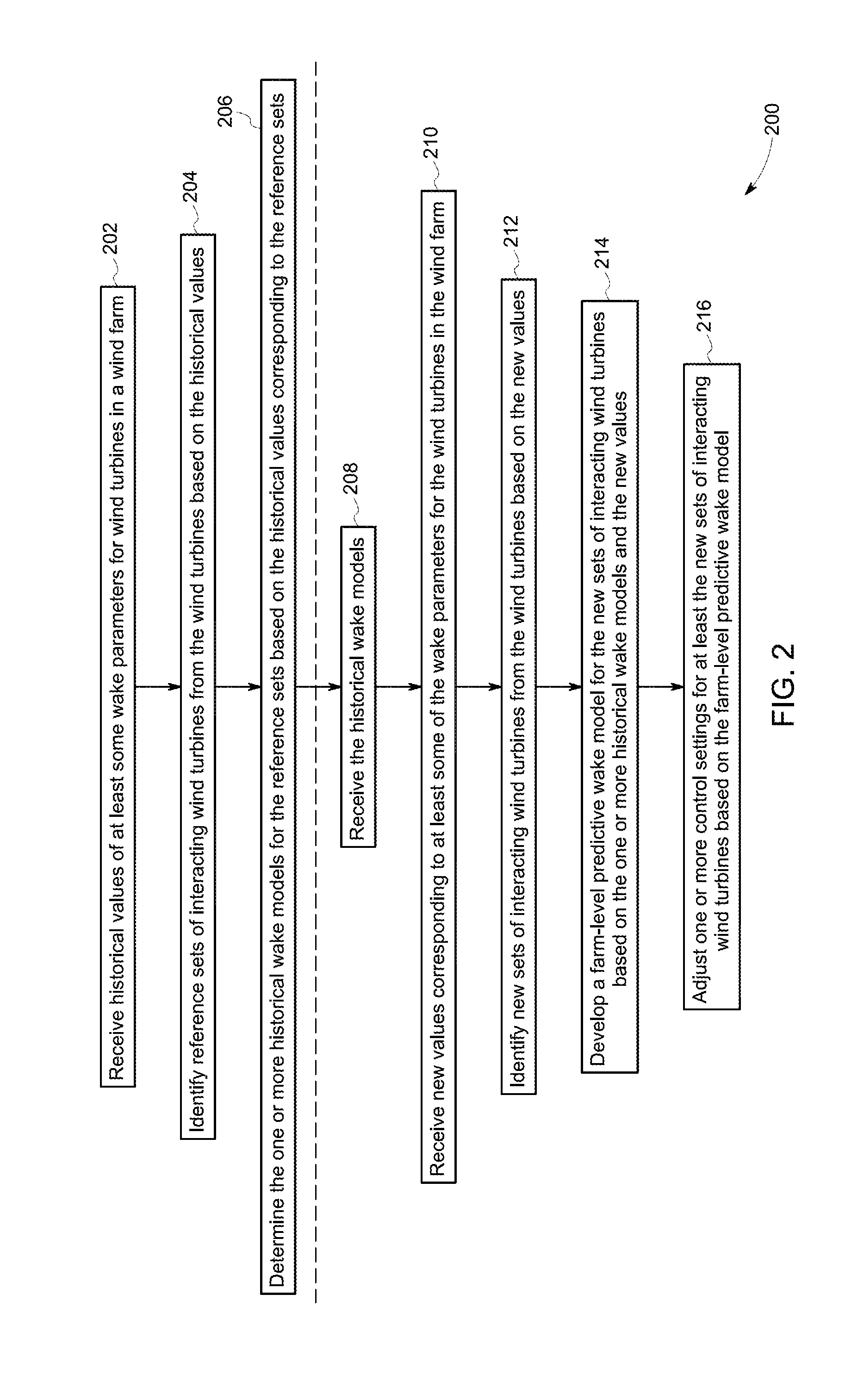Systems and methods for optimizing operation of a wind farm
a technology for optimizing the operation and wind farm, applied in adaptive control, process and machine control, instruments, etc., can solve the problems of increasing the fatigue load placed on the downstream wind turbine, the independent optimization of the wind turbine may not account for aerodynamics, and the performance of the wind farm is not optimal at the farm level. to achieve the effect of optimizing the operation of the wind farm
- Summary
- Abstract
- Description
- Claims
- Application Information
AI Technical Summary
Benefits of technology
Problems solved by technology
Method used
Image
Examples
Embodiment Construction
[0020]The following description presents exemplary embodiments of systems and methods for optimizing operation of a wind farm. Particularly, embodiments illustrated herein disclose a method for data-driven modeling of wake effects by leveraging data conventionally aggregated by a supervisory control and data acquisition (SCADA) server at the wind farm. The aggregated data may include wake parameters including ambient conditions, geometrical layout of the wind farm, and / or operational information corresponding to the wind turbines. At least some of the wake parameters such as the geometrical layout may be known or received once, whereas some other wake parameters such as the ambient conditions may be continually monitored to aid in estimating the wake effects at the wind-farm-level.
[0021]The ambient conditions, for example, may include prevailing wind direction, wind speed detected at an upstream wind turbine (upstream wind speed), wind speed detected at a downstream wind turbine (do...
PUM
 Login to View More
Login to View More Abstract
Description
Claims
Application Information
 Login to View More
Login to View More - R&D
- Intellectual Property
- Life Sciences
- Materials
- Tech Scout
- Unparalleled Data Quality
- Higher Quality Content
- 60% Fewer Hallucinations
Browse by: Latest US Patents, China's latest patents, Technical Efficacy Thesaurus, Application Domain, Technology Topic, Popular Technical Reports.
© 2025 PatSnap. All rights reserved.Legal|Privacy policy|Modern Slavery Act Transparency Statement|Sitemap|About US| Contact US: help@patsnap.com



